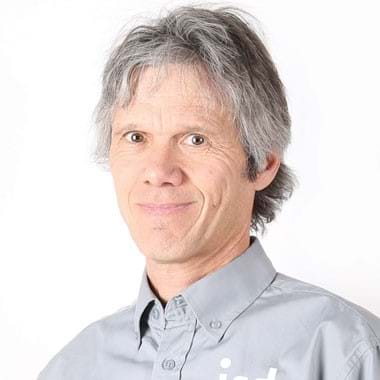Strategies to mitigate soil degradation in no-till field crops with the goal of reducing herbicide use and boosting soil quality and yields

Richard Hogue
Researcher, Ph.D.
418 643-2380
ext 420

Marc-Olivier Gasser
Researcher, agr., Ph.D.
418 643-2380
ext 650
Description
This three-year project will focus on an array of mitigation protocols in a field crop system (corn–soybean–grains). The level of glyphosate herbicide applications will range from “high” (conventional crop practices) to “none” (organic crop practices). The mitigation protocols will involve a spectrum of intercrops or cover crops, as well as a variety of herbicide applications, depending on which protocols are favored by participating growers.
To develop a predictive and quantitative model, in the fall of the second year we will collect soil samples from fields subjected to the four protocols, which represent a range of no-till impacts, and place them in containers destined for a condition-controlled growth chamber. This experimental design with repetitions will allow us to obtain a set of reference values that will supplement the experimental values generated from the 12 fields over three years. We will calculate physicochemical and agronomic indicators, as well as soil glyphosate and aminomethylphosphonic acid levels. Soil microbiome analyses will also be conducted.
Objective(s)
- Determine the impacts of a range of field crop practices in no-till fields and in a growth chamber.
- Develop a predictive model for the effectiveness of soil degradation mitigation protocols that combines the usual soil quality indicators with new indicators derived from our quantitative analysis of soil microbiota diversity and the measurement of soil glyphosate and aminomethylphosphonic acid levels.
From 2019 to 2023
Project duration
Soil health, Pest, weed, and disease control
Services
The protocols studied in this project aim to reduce the application of glyphosate, a substance classified as "probably carcinogenic" by the International Agency for Research on Cancer.

Partners
Ministère de l'Agriculture, des Pêcheries et de l'Alimentation du Québec | Université du Québec à Montréal

This may interest you
Pyrolysis of agricultural residues to produce bio-oil having No.2 fuel oil characteristics for greenhouse heating systems
The project generated scientific knowledge to produce bio-oil from rapid pyrolysis using plastic residues.
Researcher: Stéphane Godbout

Hydrologic monitoring of Castors and Morpions brooks
Hydrologic monitoring of Castors and Morpions brooks.
Researcher: Simon Ricard

Management and ecological restoration of peatlands for a sustainable Canadian horticultural peat industry
Development of a strategy for rapidly producing biomass using restoration and irrigation.
Researcher: Stéphane Godbout


